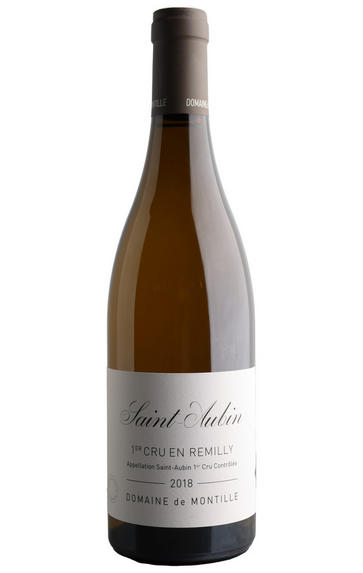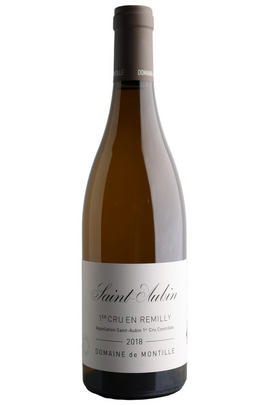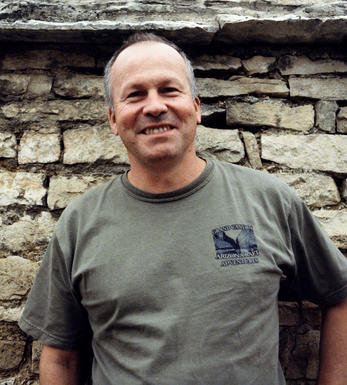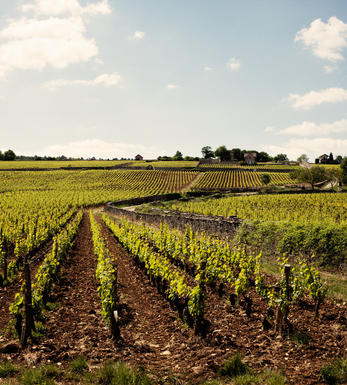
2018 St Aubin, En Remilly, 1er Cru, Domaine de Montille, Burgundy

Critics reviews
The 2018 St. Aubin En Remilly 1er Cru has a more leesy bouquet than other whites from de Montille, with plenty of cooking apple and Conference pear scents, and a little denser than other Remillys I have encountered. The palate is well balanced with a fine bead of acidity and quite harmonious, revealing a discreet touch of salinity and hints of orange pith toward the pretty finish. Very fine.
Drink 2022 - 2032
Neal Martin, vinous.com (Oct 2019)
One of the highlights of the range is the 2018 Saint-Aubin 1er Cru En Remilly, a lovely wine that offers up aromas of pear, waxy citrus rind, white flowers and crushed chalk. On the palate, it's medium to full-bodied, supple and enveloping, with lively acids and a charming core of fruit, concluding with a mineral finish.
William Kelley, Wine Advocate (Feb 2020)
About this WINE

Domaine de Montille
The De Montille family has long been a venerable one in Burgundy, though Domaine de Montille’s reputation was properly established in 1947: prominent Dijon lawyer Hubert de Montille inherited 2.5 hectares in Volnay, later adding further parcels in Volnay, Pommard and Puligny. Hubert’s style was famously austere: low alcohol, high tannin and sublime in maturity.
His son, Etienne, joined him from ’83 to ’89 before becoming the senior winemaker, taking sole charge from ’95. Etienne also managed Château de Puligny-Montrachet from ’01; he bought it, with investors, in ’12.
The two estates were separate until ’17, when the government decreed that any wine estate bearing an appellation name could no longer offer wine from outside that appellation.
The solution was to absorb the château estate into De Montille – the amalgamated portfolio is now one of the finest in the Côte d’Or.
Etienne converted the estate to organics in ‘95, and to biodynamics in 2005, making the house style more generous and open, focusing on the use of whole bunches for the reds.

Saint Aubin
Though tucked away in a side valley behind the two ‘Montrachet’ villages, Saint-Aubin is a great source of fine, steely white Burgundy and some attractively fruity reds. Production used to be about 50:50 between the two colours, but the whites have become the more sought-after and now represent two-thirds of the crop. There is a significant difference however between the best Premiers Crus – such as En Remilly – and the vineyards tucked away further up the valley.
- 80 hectares of village Saint-Aubin
- 156 hectares of Premier Cru vineyards (15 in all). The finest include En Remilly, Murgers des Dents de Chien, La Chatenière, Les Frionnes
- Recommended producer: Hubert Lamy

Chardonnay
Chardonnay is often seen as the king of white wine grapes and one of the most widely planted in the world It is suited to a wide variety of soils, though it excels in soils with a high limestone content as found in Champagne, Chablis, and the Côte D`Or.
Burgundy is Chardonnay's spiritual home and the best White Burgundies are dry, rich, honeyed wines with marvellous poise, elegance and balance. They are unquestionably the finest dry white wines in the world. Chardonnay plays a crucial role in the Champagne blend, providing structure and finesse, and is the sole grape in Blanc de Blancs.
It is quantitatively important in California and Australia, is widely planted in Chile and South Africa, and is the second most widely planted grape in New Zealand. In warm climates Chardonnay has a tendency to develop very high sugar levels during the final stages of ripening and this can occur at the expense of acidity. Late picking is a common problem and can result in blowsy and flabby wines that lack structure and definition.
Recently in the New World, we have seen a move towards more elegant, better- balanced and less oak-driven Chardonnays, and this is to be welcomed.


Buying options
Add to wishlist
Description
The upper part of this vineyard is very well-exposed and can sometimes give exotic wines if picked too late. This, however, is perfectly balanced, with a ripe-fruit attack underpinned by stinging acidity and a chewy grip on the finish. A serious and textural wine. Drink 2022-2029.
wine at a glance
Delivery and quality guarantee